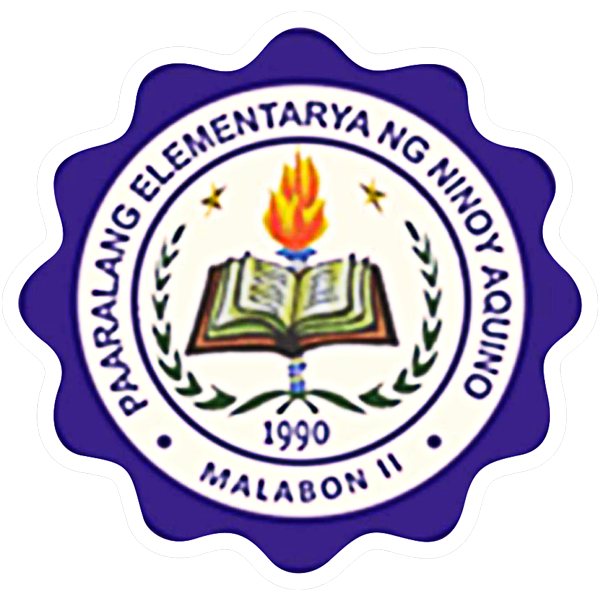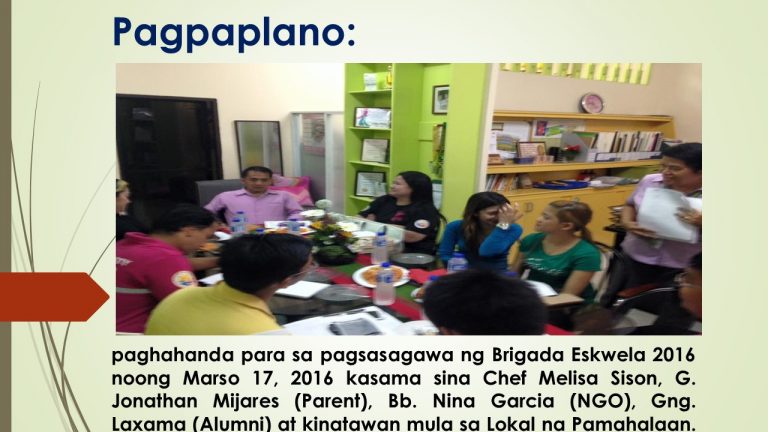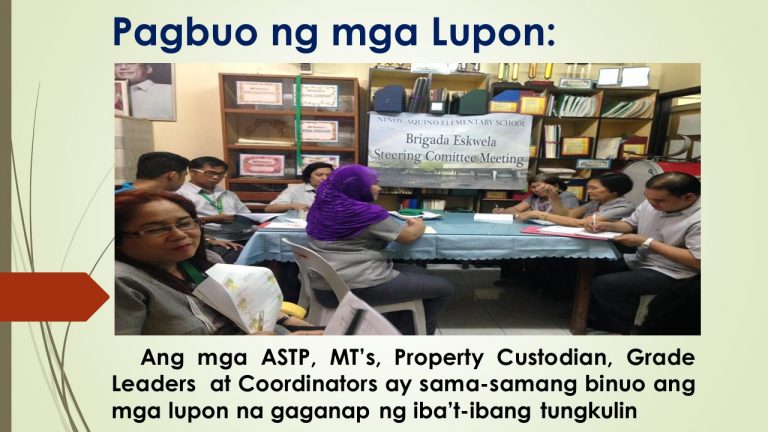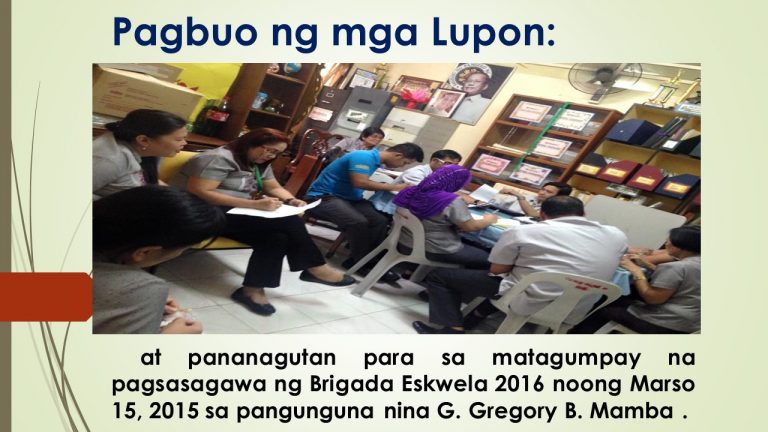It is a parallel learning system in the Philippines that provides a practical option to the existing formal instruction. When one does not have or cannot access formal education in schools, ALS is an alternate or substitute. ALS includes both the non-formal and informal sources of knowledge and skills.
Menu
Philippine Standard Time:
BRIGADA ESKWELA
Ang Paaralang Elementarya ng Ninoy Aquino ay kabilang sa mga paaralan sa Lungsod ng Malabon na nabigyan ng parangal sa iba’t-ibang aspeto sa tulong ng mga guro, magulang, mag-aaral at iba’t-ibang grupo na patuloy na sumusuporta upang makamit ang mga layunin ng paaralang pag-unlad upang ang lahat ay “Tayo para sa Paaralang Ligtas, Maayos at Handa mula Kindergarten hanggang Senior High School”. Isang patunay dito ay ang mga natatanging parangal na nakamit nito sa nakalipas na mga taon gaya ng mga sumusunod: Most Functional Science Laboratory Best Implementer of Learning Resource Management and Development System (Elem. Level, March 27, 2015) Search for Best 21st Century Interactive Classroom (Elem. Level, Oct. 2015) 4. Superintendent Award “Gulayan sa Paaralan” 2015-2016 Special Awardee 5. Best Implementer of Teachers Quality for S.Y. 2014-2015. 6. Superintendent Award, 2013-2014 7. Superintendent Award, 2013-2014
What is Alternative Learning System or ALS?
Why is there a need for Alternative Learning System in the Philippines?
Many Filipinos do not have a chance to attend and finish formal basic education (Grades 1-6 and Year 1-4) due to many reasons. Some drop out from schools while some do not have schools in their communities. Since every Filipino has a right to free basic education, the Government establishes ALS to provide all Filipinos the chance to have access to and complete basic education in a mode that fits their distinct situations and needs.
What is the basis of ALS implementation in the Philippines?
The 1987 Philippine Constitution provides for the recognition and promotion of other forms of education other than formal education. Article XIV, Section 2, Paragraph (1) declares that the State shall establish, maintain and support a complete, adequate and integrated system of education relevant to the needs of the people and society; and paragraph (4) concisely encourages non-formal, informal and indigenous learning systems as well as self-learning, independent and out-of-school study programs particularly those that respond to community needs.
The Governance Act for Basic Education otherwise known as the Republic Act 9155 stipulates the establishment of the Alternative Learning System (ALS) to provide out-of-school children, youth and adults population with basic education.
Credit: http://www.deped.gov.ph/als
Department of Education Undersecretary for Muslim Affairs, Dr. Manaros B. Boransing, gives the following definition and types of madrasah in the Philippines:
Madrasah (pl. madaris) generally refers to Muslim private schools with core emphasis on Islamic studies and Arabic literacy. It is a privately-operated school which relies on the support of the local community or foreign donors, particularly from Islamic or Muslim countries. The madaris are the oldest educational institution in Mindanao and are recognized to be the single most important factor in the preservation of the Islamic faith and culture in the Philippines.
There are three general descriptive types of madrasah in the Philippines.
- Traditional or weekend madrasah. Instruction is basically religious. It is considered as non-formal education due to its characteristics: (a) classes are held on Saturdays and Sundays only or days agreed upon by the teacher and the students/pupils; (b) it does not have a formal curriculum; (c) it is non-graded and may have multi-age grouping; and (d) it only requires its teachers to be graduates of a madrasah or to be an imam (Muslim religious leader)
Credit to: http://depedaliveprogram.weebly.com/
ICT INTEGRATION IN THE CLASSROOM, S.Y. 2016-2017
The implementation of the K to 12 Curriculum give way to the new strategies and techniques in teaching-learning process inside the classroom.
Most of the teachers that attended the Mass Training on K to 12 Curriculum preferred to use the Information and Communication and Technology (ICT) in the delivery of their lesson to the pupils. This school year, almost all classrooms have Flat/LED TV and/or projector that are utilize by teachers in the teaching-learning process. In K to 12 Curriculum, listening and viewing are vital skills need to be develop by school children that are directly address by using ICT equipment like laptop, projector, flat screen television, speakers and others.
Classrooms of Ninoy Aquino Elementary School from Kindergarten to Grade 6 had installed a LED TV and/or projector screen that are used during classroom discussion.
- Kindergarten Classrooms:
The Kindergarten pupils actively participated and enjoying their classroom discussion with ICT integration.
SCOUTS ARE CREATING A BETTER WORLD FOR THEIR COMMUNITIES THROUGH OUR WORLD SCOUT PROGRAMMES
The Messengers of Peace (MoP) Initiative is a call to action, inspiring and sharing the message of peace with more than 20 million Scouts and young people in over a million local communities in over 160 countries to help “Create a Better World”.
With the support of His Majesty King Abdullah of Saudi Arabia and His Majesty King Carl XVI Gustaf of Sweden, the idea was conceived in 2010 and launched in 2011. This initiative is the flagship programme of the World Organization of the Scout Movement, calling its member NSOs to support the programme through Service Projects and Community Service at the grassroots level.
In the WOSM’s Network Report for the month of February 2014, the Boy Scouts of the Philippines ranks 1st in the Asia-Pacific Region in terms of Network Membership and Service Hours, with more than 3,000 members online and more than 500 Million Service Hours, respectively. Overall, we ranked Second at the World Level after Saudi Arabia.
By the end of 2014, our NSO target is to reach at least 10,000 Scouts and Leaders from BSP to take part in this world initiative. This would be possible by increasing our members, service hours and service projects uploaded and shared to the WOSM’s Messengers of Peace platform.
In support to this initiative, the Boy Scouts of the Philippines is enjoining all Local Councils and Regions to help promote “Messengers of Peace” by conductingMoP Workshops and Modules during council and regional Scouting events and observances with the help of the Council and Regional MoP Coordinators duly trained for the purpose.
Should you decide to include the Messengers of Peace Logo in your future Council and Regional Scouting events and activities, please see the links below:
credit: http://scouts.org.ph/messengers-of-peace/
What is Girl Scouting?
Girl Scouting is a worldwide movement that provides girls and young women, aged 4 to 21 years old, a non-formal educational program based on character development and the ideals of service. The Movement is open to girls and young women of diverse race and religion and cuts across social barriers. Membership is voluntary. The Movement is non-political and non-sectarian. It is independent and non-governmental and helps in nation-building through efforts pertaining to the home, school, church, government units and other agencies. While girls are the focus of the Movement, the adult volunteers also enjoy many stimulating opportunities by serving the Movement. These volunteers hold ultimate responsibility for the Movement. Self-training through enriching experiences in Girl Scouting influences girls and young women into becoming change agents who are responsible, decisive, useful, respected and acknowledged citizens in a changing world.
The GSP Logo
- The color green depicts youth.
- The three loops forming the trefoil (green) symbolize the three parts of the Girl Scout Promise: God, country, and mankind.
- The circle stands for the sisterhood of Girl Guiding and Girl Scouting around the world.
- The stars (white) represent Luzon, Visayas, and Mindanao.
- The stalk (white) serves as a reminder of the strong foundation which supports the organization in its character-formation and values-education initiatives.
credit: http://girlscouts.org.ph/?page_id=8206






